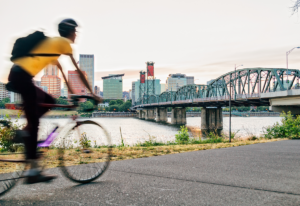Portland Pedestrian Overview 2021 – Present
Portland’s 2021 traffic data reveals a troubling reality: pedestrians are the most vulnerable group on the city’s roads. Of the 155 pedestrian-related accidents reported that year, 25 resulted in fatalities, making pedestrians the highest category of victims in fatal accidents. This number exceeds deaths from motor vehicle collisions, which accounted for 19 fatalities, and crashes involving fixed objects, which led to 13 deaths.
Younger residents are particularly at risk, with approximately 53% of pedestrian casualties involving individuals under the age of 34. Of particular concern, 34 victims were infants or toddlers between one month and four years old, raising serious questions about child safety in Portland’s urban areas. Additionally, 64% of pedestrian accidents involved vehicles traveling straight in non-junction areas, where drivers may be less likely to anticipate pedestrians.
A rising trend in pedestrian deaths is evident. Between 2018 and 2020, the city saw an average of 16 pedestrian deaths per year. However, in the last three years, that number has increased to 26 annually. Compounding the issue, homelessness has become a significant factor. While people experiencing homelessness made up less than 1% of Multnomah County’s population in 2023, they accounted for 19% of traffic fatalities. Disturbingly, half of the pedestrians killed that year were homeless, with 12 out of 24 losing their lives in fatal crashes.
Cycling in Portland
Between 2015 and 2019, the Portland metro area recorded 2,420 bike crashes, according to data from the Oregon Department of Transportation and Washington State Patrol. A significant proportion of these incidents occurred in designated bike lanes and at intersections. Specifically, 66% of the crashes took place on roads featuring some form of bike infrastructure, which includes regular lanes, protected lanes, or bike-only paths.
Over the past decade, the number of bike-related fatalities in Portland has remained relatively stable. When compared to other cities, Portland ranks in the middle tier for bicycle safety; however, it performs slightly worse than the national average of 2.7 fatal bicycle crashes per million residents from 2017 to 2021. Notably, certain intersections pose a greater danger for cyclists.
The ranked dangerous intersections for cyclists include:
- NW Broadway and NW Hoyt St
- S Moody Ave and S Sheridan St
- NW 20th Ave and NW Everett St
- N Broadway and N Flint Ave
- SE 7th Ave and SE Hawthorne Blvd
Interestingly, six of the intersections within the top ten locations for bike crashes share a common factor of being located at or near approaches to or departures from bridges, highlighting an area of concern for cyclist safety in the Portland area.
Portland scores 56 out of 100 in the large cities category for bike safety. Known for its progressive bike culture and extensive network of bike lanes, Portland continues to be a leader in urban cycling initiatives, despite facing challenges like heavy traffic and road-sharing with motor vehicles.

